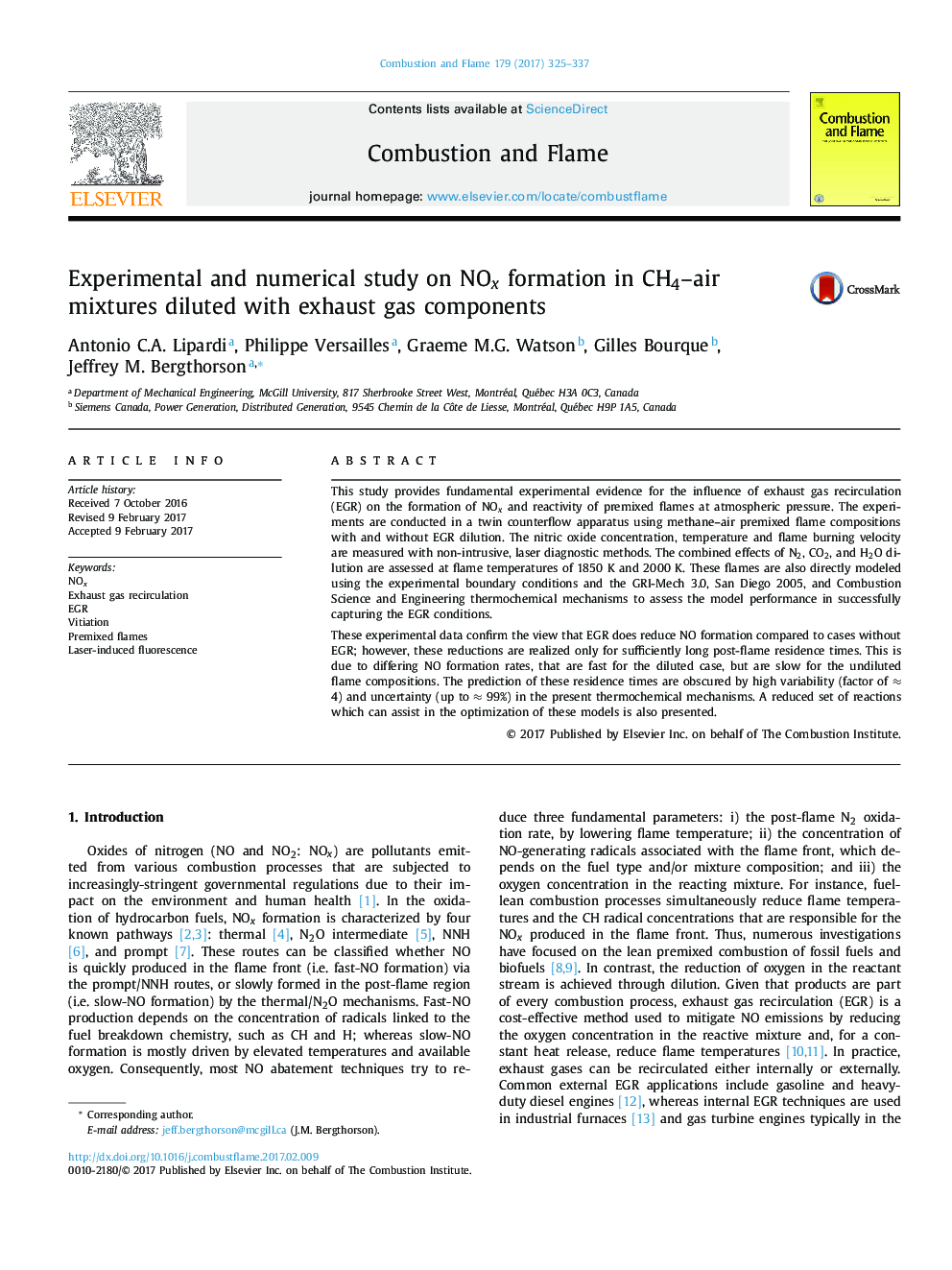| Article ID | Journal | Published Year | Pages | File Type |
|---|---|---|---|---|
| 6468294 | Combustion and Flame | 2017 | 13 Pages |
This study provides fundamental experimental evidence for the influence of exhaust gas recirculation (EGR) on the formation of NOx and reactivity of premixed flames at atmospheric pressure. The experiments are conducted in a twin counterflow apparatus using methane-air premixed flame compositions with and without EGR dilution. The nitric oxide concentration, temperature and flame burning velocity are measured with non-intrusive, laser diagnostic methods. The combined effects of N2, CO2, and H2O dilution are assessed at flame temperatures of 1850Â K and 2000Â K. These flames are also directly modeled using the experimental boundary conditions and the GRI-Mech 3.0, San Diego 2005, and Combustion Science and Engineering thermochemical mechanisms to assess the model performance in successfully capturing the EGR conditions.These experimental data confirm the view that EGR does reduce NO formation compared to cases without EGR; however, these reductions are realized only for sufficiently long post-flame residence times. This is due to differing NO formation rates, that are fast for the diluted case, but are slow for the undiluted flame compositions. The prediction of these residence times are obscured by high variability (factor of â 4) and uncertainty (up to â 99%) in the present thermochemical mechanisms. A reduced set of reactions which can assist in the optimization of these models is also presented.
